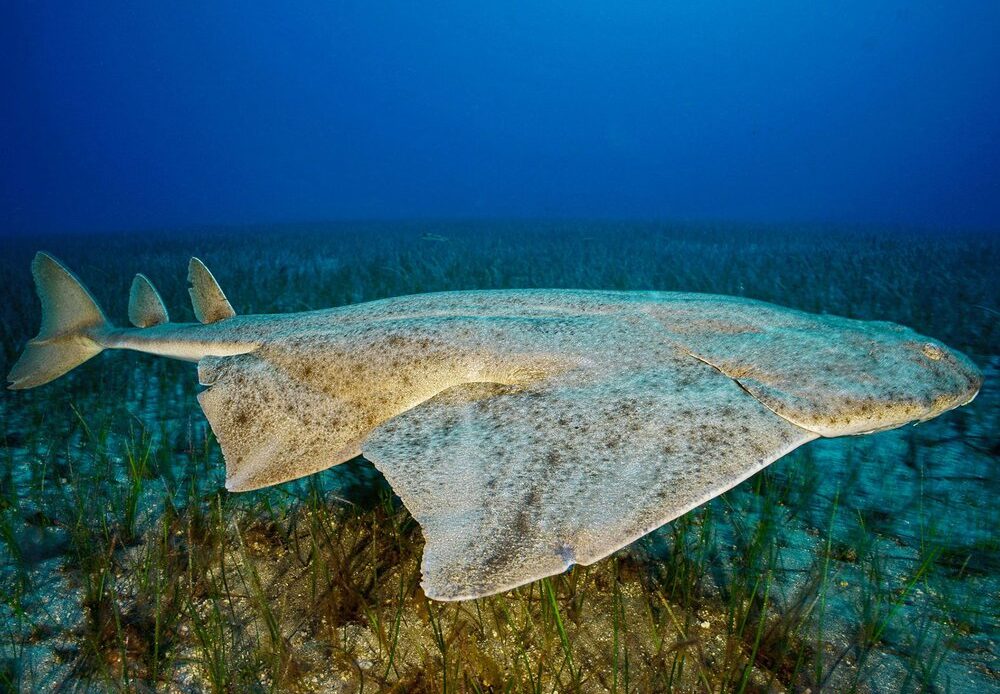The Canary Islands are a hotspot for critically endangered angelsharks (Squatina squatina), perhaps lured by the artificial beaches that provide safe havens for juveniles.
Mike Sealey
This article is from Hakai Magazine, an online publication about science and society in coastal ecosystems. Read more stories like this at hakaimagazine.com.
Out in the Atlantic Ocean, roughly 60 miles off the northwest coast of Africa, lies an archipelago known as the Canary Islands, created millions of years ago by intense volcanic activity. The biggest and most populated island, Tenerife, rises from the deep-ocean floor to a series of peaks, one of which is the third-largest volcano in the world. Tenerife’s interior highlands are a moonscape, while its coastline of lava rock and sheer cliffs is pounded by surf. In contrast to most of the island’s stark geology, north of the island’s capital, Santa Cruz, is a long crescent-shaped beach of soft yellow sand, with groves of palm trees and a calm bay created by a long breakwater. This is Playa de las Teresitas, a magnet for northern European tourists craving winter sun.
But most of the people sunbathing on Teresitas are likely unaware of what lurks in the shallow waters lapping the shoreline. The bay—engineered and less than six miles from the Canaries’ second-largest city—is a surprising haven for pups of one of the world’s most critically endangered fish: the angel shark.
When the Spanish took control of the Canaries in the 1400s, they began cultivating cash crops: cochineal and sugar cane in the beginning, and later adding bananas, tomatoes and other valuable commodities. For centuries, the islands’ economy thrived, but it was a fragile wealth. Over the years, livelihoods were threatened by cycles of crop disease, competition from cheaper markets, and lava flows that wiped out harvests and turned good agricultural land into barren terrain. In the 1950s, the boom in package tourism showed promise as a new cash crop. But while the islands had the sunshine, warm climate and ease of access from Europe needed for this new industry, they were missing a vital element: picture-postcard sandy beaches.
Cue planners on Tenerife, who concocted an audacious plot to make over one of the island’s exposed lava-rock beaches. They chose a stretch of coastline close to Santa…
Click Here to Read the Full Original Article at Travel | smithsonianmag.com…
